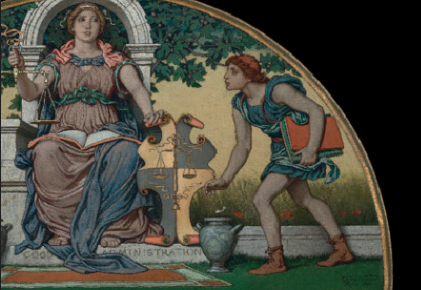
As democracy across the globe faces new stresses and dramatic challenges, the power of the judiciary to reshape electoral procedure is increasingly important. Yet underlying any judicial intervention – for good or for ill – in how people rule themselves is a threshold question: why does the judiciary have authority over the essence of democracy itself? In philosophical terms, since democracy’s legitimating value is the autonomy of the people, how can an impartial court transform the terms of that autonomy?
The current atmosphere of polarization and anxiety sharpens the paradox of judicial control of democratic process. Rule of law neutrality is a universal feature of legitimate constitutional democracy; through it courts can protect individual rights and ensure neutrality in adjudication. To do this courts must be independent of political pressure, serving justice objectively and disinterestedly. Yet the core of democracy, and its unique claim to moral legitimacy, is the fact that it is the sole regime type where the people rule themselves. As the point of entry, people must not only vote in elections, but also have ultimate authority over the design of the electoral procedures that frame them (the extreme counterexample being regimes that are democratic in name only, giving people the ‘freedom’ to vote – but where the victory of a single pre-selected candidate is a certainty). The result is a dilemma. If courts decline to intervene to protect democracy, they fail to ensure democratic process accords with the needs of constitutionalism. Yet the more robustly judges – who must make decisions independent of political pressure – transform democracy, the greater the intrusion of the autonomy of the people that is democracy’s vindicating virtue.
How can this dilemma be resolved? The Law of Freedom: The Supreme Court and Democracy offers an answer – and shows how the law itself tracks this answer. Since the arrangement of democracy must remain inevitably subject to popular control, it must also remain ‘open’ and unsettled. When the judiciary intervenes, its best lasting contribution can be as a forum of debate and reflection that serves this openness. While specific legal questions – when can a campaign finance advertisement be legally regulated? When is a legislative rule that takes race into account discriminatory? – must be answered to resolve disputes, the longer arc of judicial intervention should possess this open character. Such a body of judge-made law will become a domain of continual contestation over how to best design democracy. In this ongoing debate, judges should always seek to ensure that the people themselves rule.
In America, the Supreme Court has been uniquely muscular in transforming the terms of democracy. It has yielded some of the most intractable and newsworthy debates in American law – is partisan gerrymandering illegal? How much should money be kept out of politics? – but rarely has the Court reached settled or stable answers. This is often framed as a failure of rule of law, and election law is one of the domains where justices’ political affinities seem decisive.
Yet read as a battle between understandings of popular freedom, underlying any partisan conflict is a debate between two theories of popular democratic autonomy. One prizes democracy as a realm of private self-expression, in which private power and thus political inequality is fair game in the realm of politics. This libertarian view is championed by conservatives. Another prioritizes the equality of a shared civic project, and seeks to eliminate inequalities in the political process. This egalitarian view has been advanced by progressives since the Warren Court. The result is that the Supreme Court has become a nexus for debating the fundamental values of democracy. And importantly, while the egalitarian-libertarian divide generally mirrors partisan trends, it can often yield surprises that prevent politics from dominating philosophical debate – as reflected in the recently decided Moore v. Harper and Allen v. Milligan.
The integrity of democratic process is of particular urgency as liberal constitutionalism faces threats from without and within. Courts might seem saviors during such uncertain times. Yet a Supreme Court that imposes its ideal view of democracy with a rigid and unitary way threatens to ossify democracy and deprive the people of authority over their own self-rule. A long-run view of the American Supreme Court shows that it has become a forum – contentious, ferocious, and complicated, as forums often are – for debating by what ideals a free people should rule itself. It thus cannot solve the crisis of contemporary democracy, but it illuminates the values by which a people can navigate their own path.
Latest Comments
Have your say!